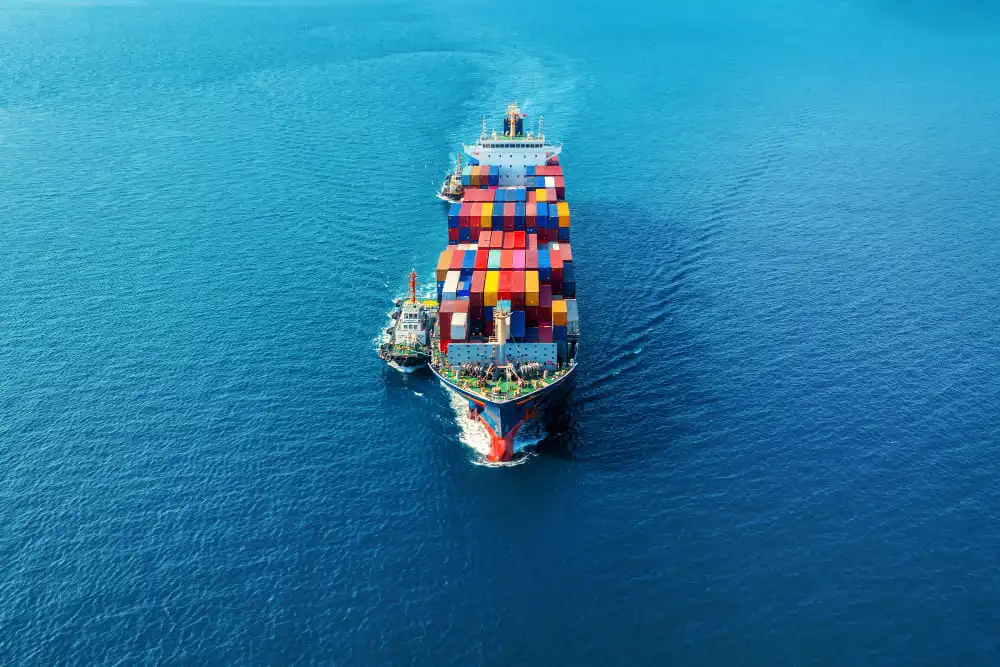Navigating the Costs of Sea Freight from Dubai: A Comprehensive Guide
Sea freight, as a vital component of global trade, plays a pivotal role in connecting businesses across the world. In the heart of this maritime network lies Dubai, a strategic hub for international trade. Understanding the intricacies and costs of sea freight from Dubai is essential for businesses looking to optimize their supply chains. This article will shed light on the various aspects of sea freight costs, offering valuable insights into how you can efficiently manage your international shipping operations.
You will be interested on: Moving from UAE to Australia
- Origin and Destination To comprehend sea freight costs, it is essential to begin with the basics: your starting point and the destination. Whether you are shipping goods to or from Dubai, it’s crucial to consider the distance, transportation infrastructure, and accessibility of the port.
- Container Size and Type Sea freight costs vary greatly based on the size and type of containers. Standard containers, such as 20-foot and 40-foot, are commonly used. Larger or specialized containers may come at a premium, so choosing the right one is pivotal.
Keep reading: Moving from UAE to France
- Freight Rates The freight rates for sea shipping from Dubai can fluctuate significantly. It’s imperative to monitor these rates and seek the most cost-effective options. Many factors, including fuel costs, demand, and competition, influence these rates.
- Incoterms Understanding Incoterms, or International Commercial Terms, is fundamental when dealing with sea freight. They define the responsibilities of buyers and sellers, impacting the overall costs. Common Incoterms include FOB (Free on Board) and CIF (Cost, Insurance, Freight).
You will be interested on: Moving from UAE to Sweden
- Shipping Line Selection Choosing a reputable shipping line is a critical decision. Different lines may offer various services, transit times, and prices. Research and negotiations are essential to secure the best deal.
- Transit Time The duration of your shipment’s journey directly affects costs. Faster transit times might come at a premium, so it’s vital to strike a balance between speed and affordability.
- Customs and Duties Navigating the complex world of customs and duties is crucial for avoiding unexpected expenses. Familiarize yourself with the specific requirements of the destination country.
Keep reading: Moving from UAE to Berlin
- Documentation The paperwork involved in sea freight can be daunting, but it’s essential for a smooth process. Incomplete or incorrect documentation can lead to delays and additional costs.
- Insurance While not always mandatory, cargo insurance can provide peace of mind in case of unforeseen events. It’s essential to understand the insurance options available and their associated costs.
- Port Handling Charges Port handling charges, which include loading and unloading fees, can significantly impact your sea freight costs. These charges may vary depending on the port and the services provided.
You will be interested on: Moving from UAE to Spain
- Environmental Fees With growing environmental awareness, some ports and shipping lines impose fees related to sustainability and emissions reduction. Being aware of these charges is important for budgeting purposes.
- Ancillary Services Sea freight often involves additional services, such as warehousing and distribution. Evaluating these services and their costs can help streamline your supply chain.
- Consolidation vs. Full Container Load Depending on the volume of your cargo, you may opt for consolidation (LCL) or a full container load (FCL). This decision has cost implications, as FCL shipments are usually more cost-effective per unit.
Keep reading: Moving from UAE to Denmark
- Economic Factors Economic conditions, currency exchange rates, and geopolitical events can affect sea freight costs. Staying informed about these external factors is crucial for budgeting and risk management.
- Negotiation Skills Effective negotiation with shipping lines, forwarders, and other service providers can lead to cost savings. Building strong relationships with your partners is beneficial in this regard.
- Technology and Tracking Utilizing technology for shipment tracking and management can enhance visibility and help you make real-time decisions that impact costs.
You will be interested on: Moving from the UAE to Germany
Conclusion
In the world of international trade, managing sea freight costs from Dubai is a multifaceted task that demands careful consideration of numerous factors. From selecting the right container type to understanding the intricacies of Incoterms and keeping an eye on economic factors, a well-informed approach can significantly reduce costs. By staying proactive, embracing technology, and maintaining strong partnerships, businesses can ensure the efficient flow of goods while keeping sea freight costs in check. Navigating the sea of costs may not always be smooth, but with the right knowledge and strategies, it can be a manageable journey.
Get a Quote Today for Your International Moving on https://baxtershipping.com/quote/


